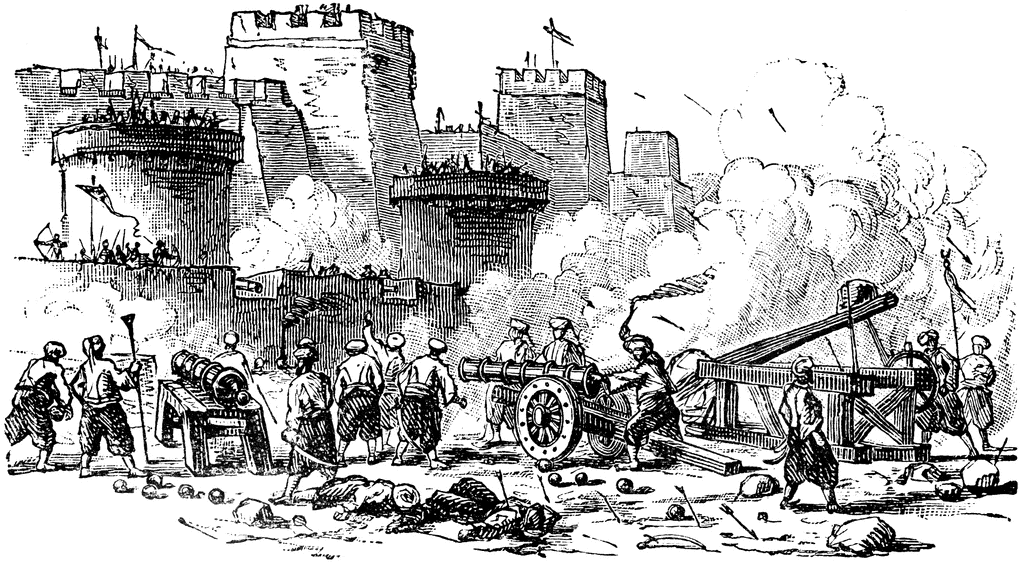Evan Liddle
AP World History: Modern 🌍
577 resourcesSee Units
Formation of Land Based Empires
In short, these empires formed like any other: Conquest of economically or strategically important areas. But in particular, there are a few unique ways these empires were forged.
🎥Watch: WHAP - Land Based Empires
Guns
Many of these empires are also known in AP World, and in many textbooks used in AP World, as “Gunpowder Empires” because they were some of the first to employ gunpowder armies en masse, several hundred years before Europe.
In the early days of gunpowder weaponry, it was a highly technical craft: an empire needed a large, skilled population to cast the metal parts for weapons as well as a resource pool to manufacture gunpowder. Training soldiers in gunpowder weaponry also took time and money, money only a large empire possessed. But even smaller states like the Tokugawa Shogunate owed their success to carefully trained use of gunpowder weapons.
The first gunpowder weapons were used by the Song Dynasty in China, but the Islamic Empires (Ottomans, Mughals and Safavids) and Qing China were the first to utilize them to a greater extent. The capture of Constantinople by the Ottomans and the conquest of Central Asia by the Qing in the late 1600s both owed their success to gunpowder weapons. Later, after 1800, industrial manufacturing would give Europe a decisive edge in this regard.

Cannon made castles obsolete and the use of gunpowder made possible rapid expansion of an empire. It was said Constantinople was impregnable, but this was no longer true after the rise of the cannon. Image Courtesy of University of South Florida
Trade and Tax Diplomacy
Another feature that helped a number of these empires rise to prominence was their friendly attitude towards merchants and reduction of existing taxes. The Ottomans and Mughals in particular are known for this. The Mughals, in the early days of their empire, abolished the jizya tax on non-Muslims (the majority of the population) and the Ottomans also had notably lower taxes than some of the empires they conquered, such as the Byzantines.
Conquering other Empires
Many of the empires in this study guide toppled existing empires who had weakened over time. Sometimes these were established empires such as the Byzantines, toppled by the Ottomans, or Mali, which was subjugated by Songhai. Other times these were the descendants of nomadic conquerors, such as the Timurid Empire in Persia, conquered by the Safavids, or the Yuan Dynasty in China, overthrown by the future leaders of the Ming Dynasty.
Why empires weaken and fall is complex and unique to each empire. Nomadic empires often weakened after their initial conquest because of their limited experience governing settled landed states or because they adapted so much to local customs and lost their fighting edge and distinctive identity. Also, with the rise of gunpowder weapons, nomads in particular lost their edge when horses were no longer the most important weapon on the battlefield.
🎥Watch: WHAP - Expanding Empires in the Early Modern World
👉
Try using a study timer like the one in Fiveable rooms to maximize your efficiency when preparing for the exam!
Try using a study timer like the one in Fiveable rooms to maximize your efficiency when preparing for the exam!
Browse Study Guides By Unit
🐎Unit 1 – The Global Tapestry, 1200-1450
🐫Unit 2 – Networks of Exchange, 1200-1450
🕌Unit 3 – Land-Based Empires, 1450-1750
🍕Unit 4 – Transoceanic Interactions, 1450-1750
✊🏽Unit 5 – Revolutions, 1750-1900
🚂Unit 6 – Consequences of Industrialization, 1750-1900
💣Unit 7 – Global Conflict, 1900-Present
🥶Unit 8 – Cold War & Decolonization, 1900-Present
✈️Unit 9 – Globalization, 1900-Present
✏️Frequently Asked Questions
🚀Thematic Guides
🗺Regional Guides
🤓Historical Thinking Skills
🧐 Multiple Choice Questions (MCQ)
📋Short Answer Questions (SAQ)
📝Long Essay Questions (LEQ)
📑Document Based Questions (DBQ)

Fiveable
Resources
© 2023 Fiveable Inc. All rights reserved.